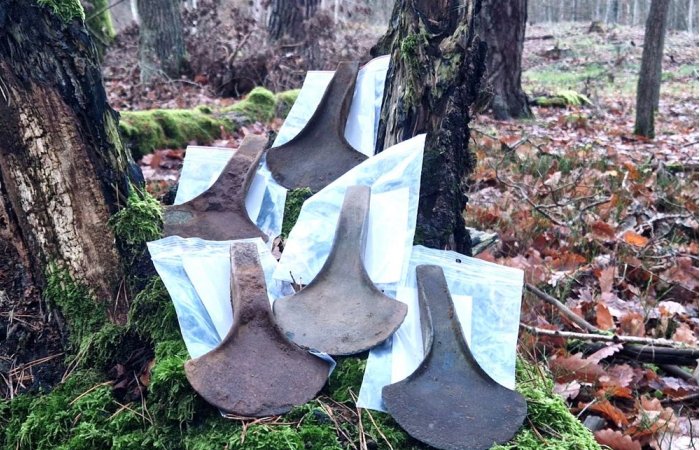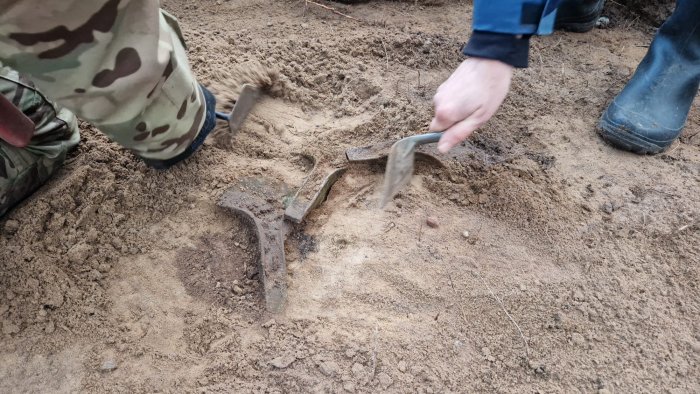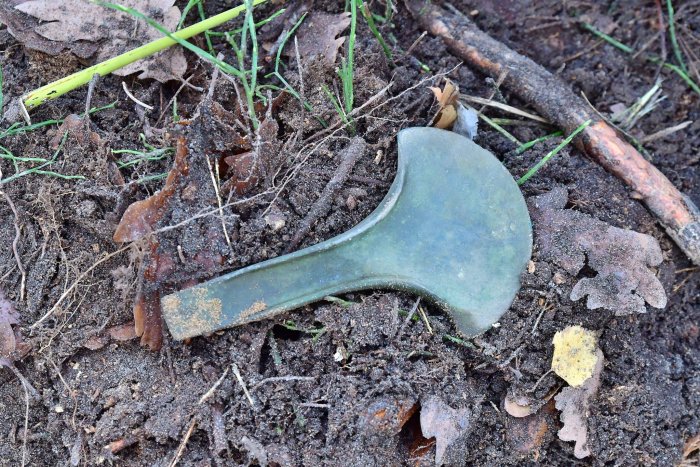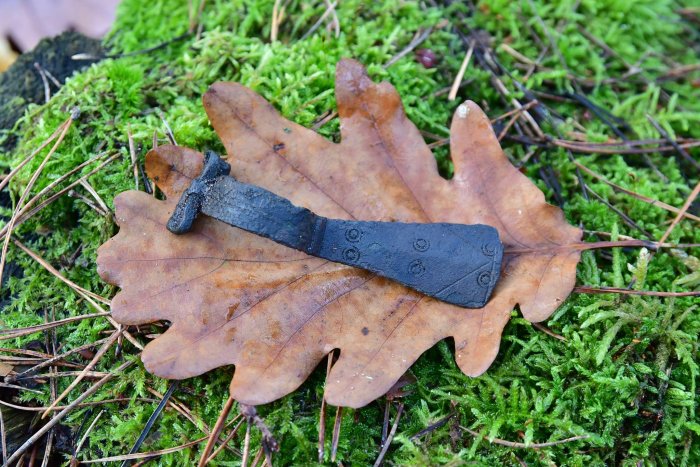Jan Bartek – AncientPages.com – An amateur treasure hunter has found five well-preserved Bronze Age axe heads in the Starogard forest near Szczecin, Poland. It is a unique discovery because these objects are rarely found on these lands.
The last time a similar weapon or tool was discovered was about 20 years ago in the Lublin region.

With Bronze Age deposits in the region consisting mainly of bracelets or breastplates, the discovery of the axe heads has been described as a distinctive archaeological marvel. PH๏τo credit: Nadleśnictwo Stargard
The find has been described as “sensational.” The five axe heads date between 1700 and 1300 BC, according to Igor Strzok, the Pomeranian Provincial Conservator of Monuments.
Strzok suggested “a potential connection to a Baltic culture originating from contemporary Lithuania or northeastern Poland, specifically categorizing the axes as the tautušiai type.
Characterized by their substantial size, the axes comprised a slender handle with elevated edges and a broad blade,” the First News reports.

The discovery was made by an amateur treasure hunter in the Starogard forest near Szczecin. PH๏τo credit:

Characterised by their substantial size, the axes comprised a slender handle with elevated edges and a broad blade. PH๏τo credit:

The last find of this type was discovered about 20 years ago in the Lublin region. PH๏τo credit:
Bronze Age deposits in the region are common on the region, but most of the unearthed objects are “bracelets or breastplates, making the discovery of these axe heads a distinctive archaeological marvel, according to Strzok.
See also: More Archaeology News
Piotr Klimaszewski from the Pomeranian Provincial Office for the Protection of Historical Monuments said that the objects found by the prospector were about 20-30 centimeters underground.
“It was a small pit under a layer of turf and humus,” he said.
The axe heads will now be taken to the Archaeological Museum in Gdańsk, where they will be examined.
Written by Jan Bartek – AncientPages.com Staff Writer





